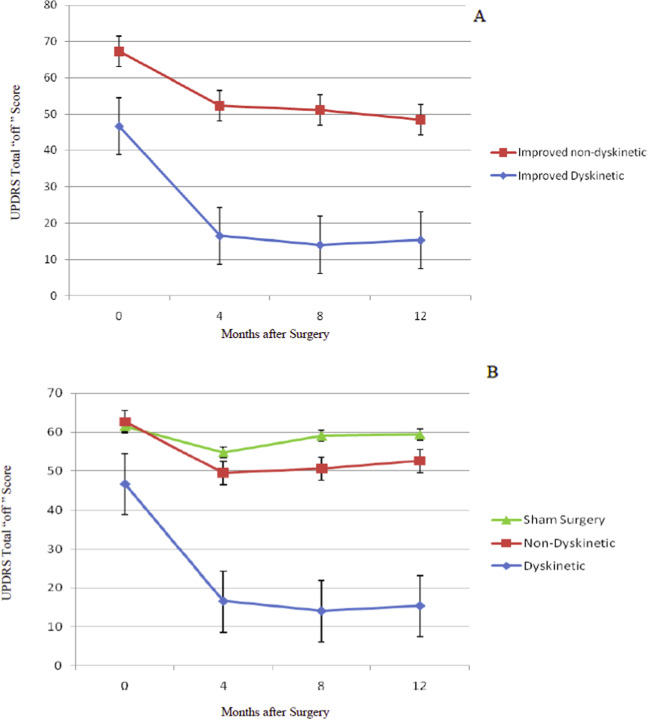Fig. 2. Change in total UPDRS “off” scores for younger transplant and sham surgery patients during the double-blind phase.
This figure presents a subset of patients shown in Fig. 1. All data in this figure were obtained in the double-blind phase. Analysis of UPDRS Total “off” scores 12 months after surgery demonstrated that the 10 younger transplanted subjects distributed into two groups, those who improved, n = 7, and those who did not, n = 3. As in Fig. 1A, data are divided based on improvement, defined as greater than 10% reduction in UPDRS Total “off” scores compared to baseline. Panel A presents results from subjects who improved after surgery. Of the seven who improved, three showed persistent dyskinesias (Improved Dyskinetic, n = 3), and 4 were improved without dyskinesias (Improved non-dyskinetic, n = 4). As with the full group presented in Fig. 1A, the dyskinetic patients had milder Parkinson signs at baseline and improved to a level of minimal disease. The improved, non-dyskinetic subjects had more severe signs preoperatively and remained with moderate Parkinson scores after 12 months. Transplanted subjects who did not improve in the first 12 months after surgery (n = 3) had outcomes similar to the sham surgery subjects (n = 11) (data not shown). There were no placebo effects. Panel B presents results comparing the three dyskinetic subjects to all other transplanted patients, whether improved or not improved, and to sham surgery subjects. When presented using this format and analyzed by one-way ANOVA, the dyskinetic subjects were significantly improved compared to the combined Improved and Not Improved non-dyskinetic transplant patients and to the sham surgery subjects (p < 0.01) (Dyskinetic, n = 3; Non-Dyskinetic, n = 7; Sham Surgery, n = 11). There was no statistical difference between the Non-Dyskinetic and Sham Surgery groups in this small subset of patients.

